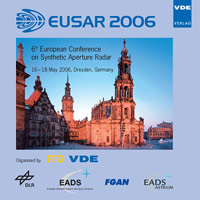Model Assessment and Inversion Limitations of Polarimetric SAR Interferometry Applied to Crop Monitoring
Conference: EUSAR 2006 - 6th European Conference on Synthetic Aperture Radar
05/16/2006 - 05/18/2006 at Dresden, Germany
Proceedings: EUSAR 2006
Pages: 4Language: englishTyp: PDF
Personal VDE Members are entitled to a 10% discount on this title
Authors:
Lopez-Sanchez, Juan M.; Ballester-Berman, J. David (DFISTS, University of Alicante, P.O. Box 99, E-03080 Alicante, Spain)
Abstract:
The application of Polarimetric SAR Interferometry to the retrieval of geophysical parameters from vegetated scenes is based on simple direct models of such scenes. To date, only the random volume over ground (RVoG) and the oriented volume over ground (OVoG) models have been used for this purpose. The first part of this work presents an overview of the advantages and limitations of these models when applied to agricultural crops. The analysis is illustrated with indoor laboratory radar data from samples of maize and rice. Using the available ground truth, we compare the theoretical values of the complex interferometric coherences, derived from the models, with the experimental ones. A low sensitivity to extinction is pointed out as a key limitation of such models. In the second part the work, two strategies for a complete inversion (i.e. estimation of all model parameters) of the OVoG model are proposed and tested using with the same data set. They are based on a combination of geometrical and numerical approaches and also on multibaseline configurations.


